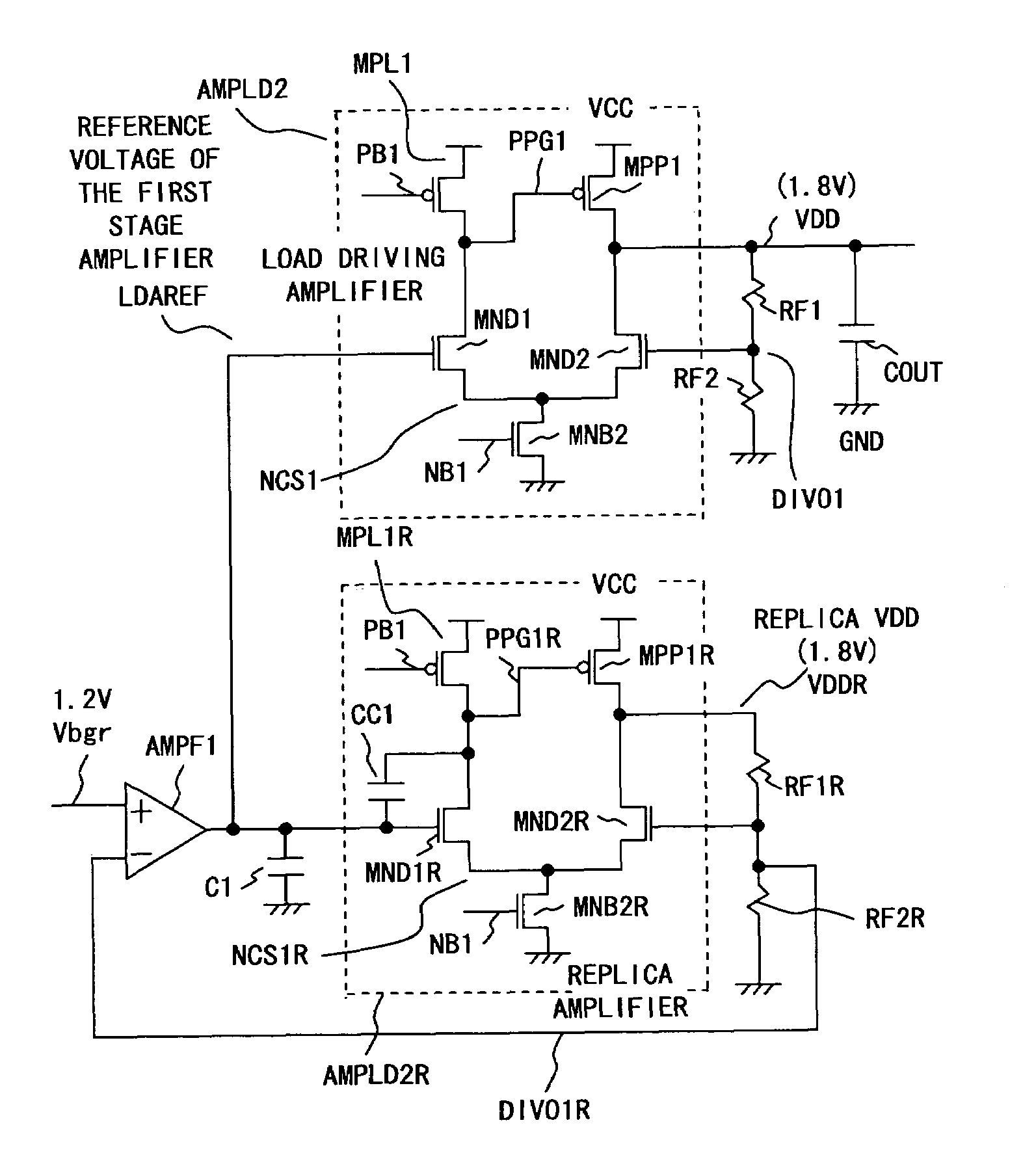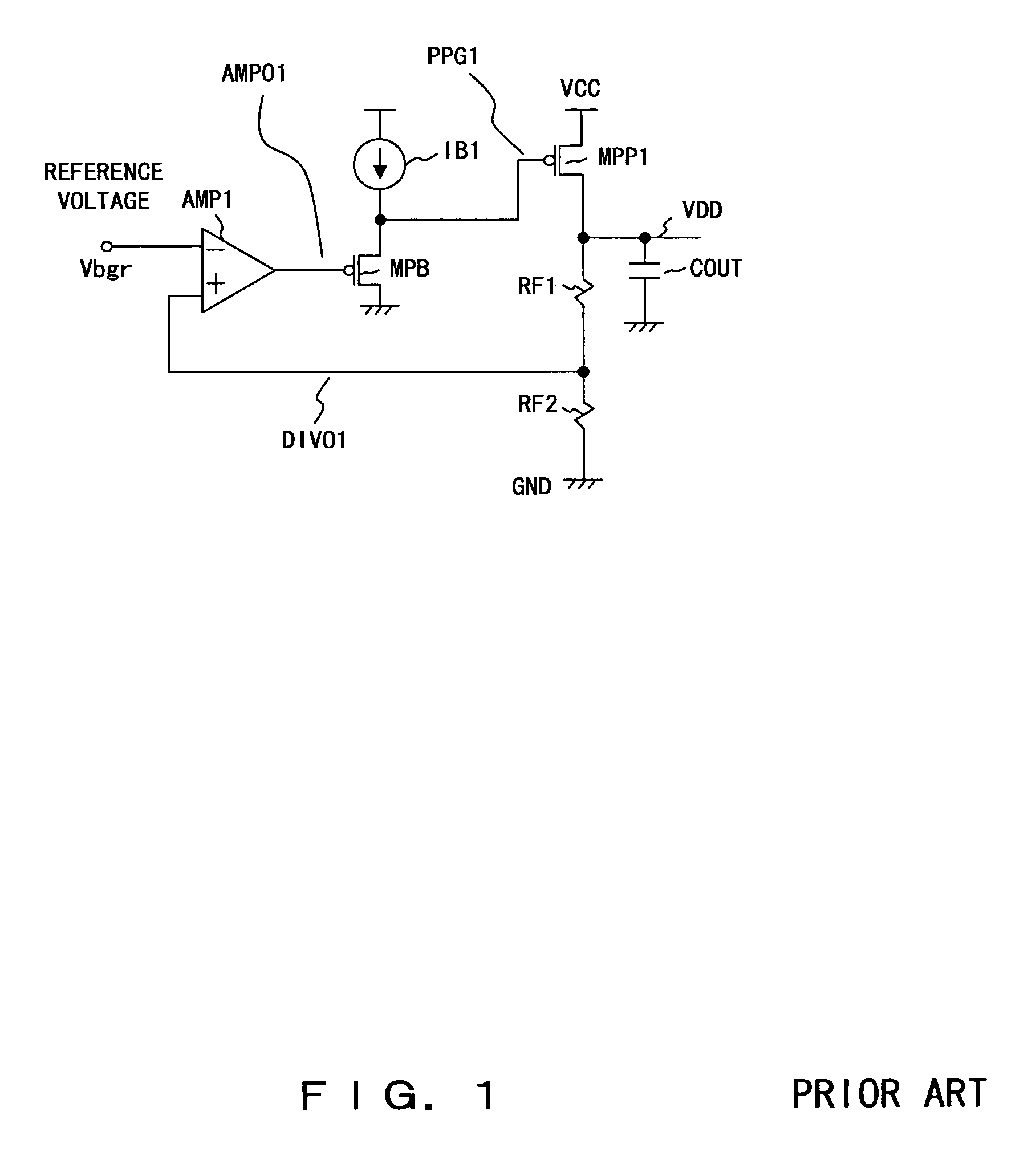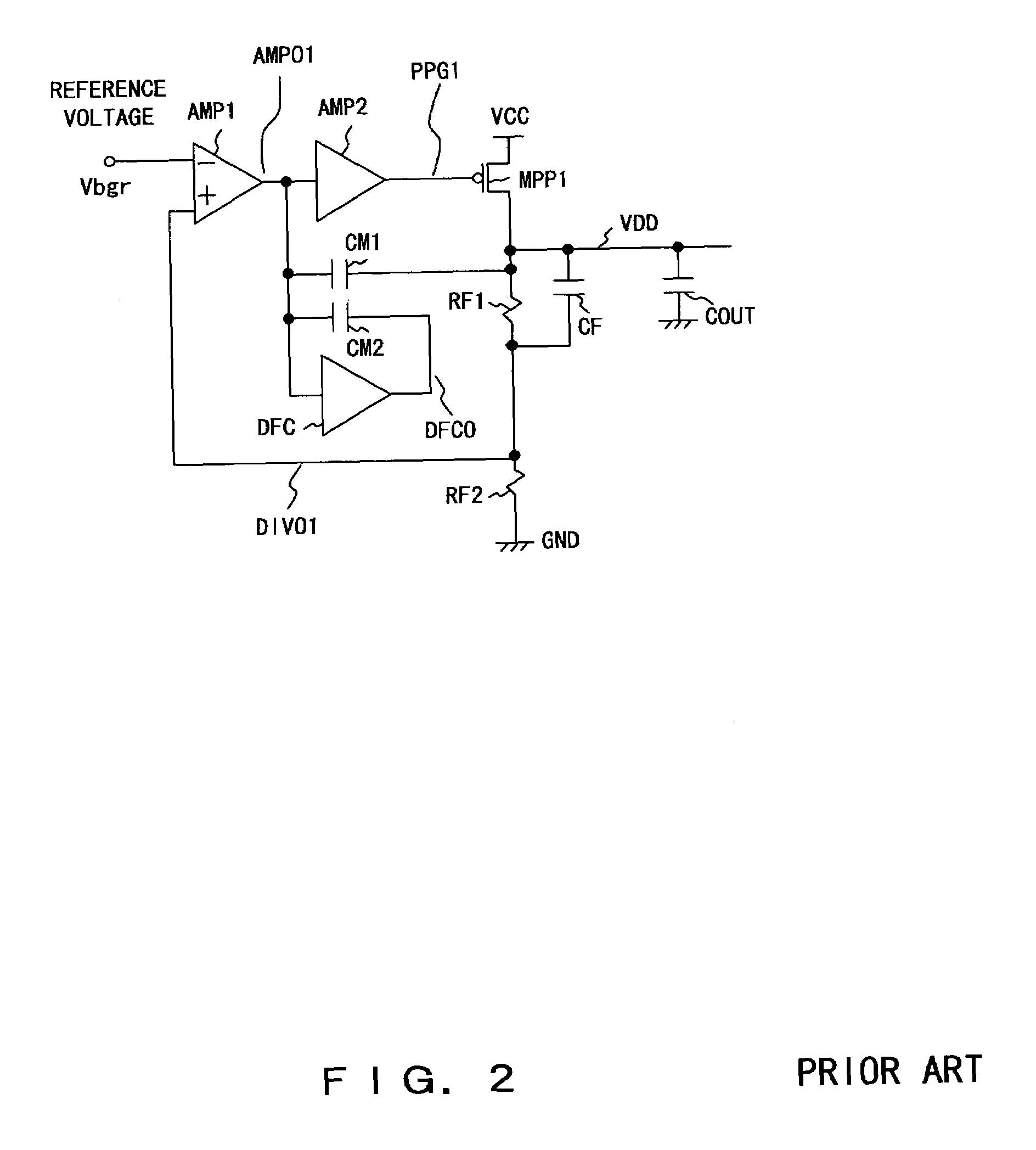Regulator circuit
a technology of a regulator circuit and a control circuit, which is applied in the direction of dc-amplifiers with dc-coupled stages, differential amplifiers, and amplifiers with semiconductor devices/discharge tubes, etc., can solve the problems of reducing the voltage accuracy of the internal power supply voltage vdd, limiting the balance between stability and stability, and achieving high speed response and high accuracy. , the effect of improving the accuracy of generating a signal
- Summary
- Abstract
- Description
- Claims
- Application Information
AI Technical Summary
Benefits of technology
Problems solved by technology
Method used
Image
Examples
second embodiment
[0180]The circuit shown by FIG. 7 has exemplified a circuit in the case of using each one of a replica amplifier (i.e., AMPLD2R) and a load driving amplifier (i.e., AMPLD2). Although the simplest circuit configuration has been shown for describing a fundamental operation, the circuit shown by FIG. 7 is faced with the case of an excessive increase of the potential of the internal power supply VDD occasionally at the time of turning the power on. In such a case, it is possible to prevent a potential of the internal power supply VDD from increasing excessively at the time of turning the power by configuring a circuit as shown by FIG. 15. The next is a description of a difference of the operation at the time of turning on the power between the circuit shown by FIG. 15 and the one shown by FIG. 7.
[0181]FIG. 15 shows a configuration of a regulator circuit according to the second embodiment. In the showing of FIG. 15, the same component sign is attached to the same component or fundamental...
third embodiment
[0229]The above described first and second embodiments are configured to constitute a feedback circuit by using the operational amplifier circuit AMPF1. Such a circuit configuration provides a benefit of obtaining a large enough gain of the feedback circuit constituted by the operational amplifier circuit AMPF1 and replica amplifier even when operating the PMOS transistor MPP1 in a linear region (i.e., a voltage between the gate and source of the transistor is amply higher than the one between the drain and source thereof). The reason is that a gain of the entirety of the feedback circuit is the product of a gain of the PMOS transistor MPP1 and that of the replica amplifier, although the gain of the transistor MPP1 drastically reduces in the linear region. This makes it possible to generate a power supply voltage VDD in high accuracy even if the potential difference between the power supply voltages VCC and VDD is small.
[0230]Comparably, in the case of not operating the transistor M...
PUM
 Login to View More
Login to View More Abstract
Description
Claims
Application Information
 Login to View More
Login to View More - R&D
- Intellectual Property
- Life Sciences
- Materials
- Tech Scout
- Unparalleled Data Quality
- Higher Quality Content
- 60% Fewer Hallucinations
Browse by: Latest US Patents, China's latest patents, Technical Efficacy Thesaurus, Application Domain, Technology Topic, Popular Technical Reports.
© 2025 PatSnap. All rights reserved.Legal|Privacy policy|Modern Slavery Act Transparency Statement|Sitemap|About US| Contact US: help@patsnap.com



